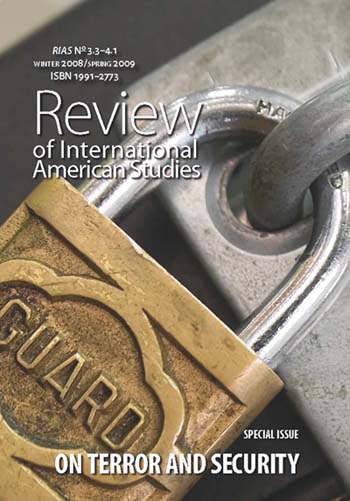Ailing Authors: Paul Auster’s "Travels in the Scriptorium" and Philip Roth’s "Exit Ghost"
Ailing Authors: Paul Auster’s "Travels in the Scriptorium" and Philip Roth’s "Exit Ghost"
Author(s): Aliki VarvogliSubject(s): Language and Literature Studies, Studies of Literature, Other Language Literature, Cultural Anthropology / Ethnology
Published by: Wydawnictwo Uniwersytetu Śląskiego
Summary/Abstract: Seven years after the attacks of 9/11 it is still unclear how, and to what extent, American literature has been or will be altered by the events and their aftermath. The scholar of contemporary literature may speak of ‘the 9/11 novel’ to refer to books dealing directly with the events of the day, but there is also a wider category of ‘the post-9/11 novel’ which not only denotes the self-explanatory date of publication, but more crucially carries the implication that all contemporary American literature can and should be read in the light of what happened and its consequences. The two novels under discussion here show that the distinction between the 9/11 and the post-9/11 novel is not always clear. Whereas Roth’s novel is set in New York after 9/11, refers specifically to the event and its effect on New Yorkers, and contains important references to politics and world affairs, Auster’s book is set in a primarily textual chronotope: an unidentifiable, non-realist time and place devoid of external referents. Yet Roth’s novel is not in any obvious way ‘about’ 9/11 and New York, whereas Auster’s novel, upon closer scrutiny, turns out to be a lot less ‘timeless’ than a first reading might suggest. What the two books have in common is a preoccupation with the role of the American author in contemporary society, and the place of the novel in today’s culture. There are of course a myriad good reasons why an American author may be asking these questions now, and indeed these are questions that have preoccupied authors throughout literary history. What these books help us to understand is how the question of authorship has now arisen as a response to the new realities precipitated by the attacks, and how these two authors have addressed the question in ways that seem strikingly dissimilar and yet have a lot in common. Roth and Auster have made different aesthetic, structural and narrative choices, and yet studying their books in tandem can prove fruitful and illuminating.When Paul Auster’s "Travels in the Scriptorium" came out in 2006, it seemed that even though there was poignancy and depth in the central premise of the author tormented by his fictional characters, it was a curiously self-indulgent book to publish in 2006, and a strange follow-up to "The Brooklyn Follies" (2005), which had seen the author venture further out of his room than even before. Whereas "The Brooklyn Follies" had been a strangely upbeat 9/11 novel about the real, lived world, this one, as the blurb suggested, represented a ‘return to more metaphysical territory’. In other words, Auster appeared to be playing the same kind of metafictional game he had been playing since the beginning of his novelistic career in the 1980s, and it seemed for that reason that "Travels" was not only somewhat slight but also an unnecessary novel. Most reviewers seemed to share this assessment. The book was described as a puzzle, a maze, or a magician’s trick (Smith, Marx, Barra). In "The New York..."
Journal: Review of International American Studies
- Issue Year: 3/2009
- Issue No: 3-4
- Page Range: 94-101
- Page Count: 8
- Language: English

